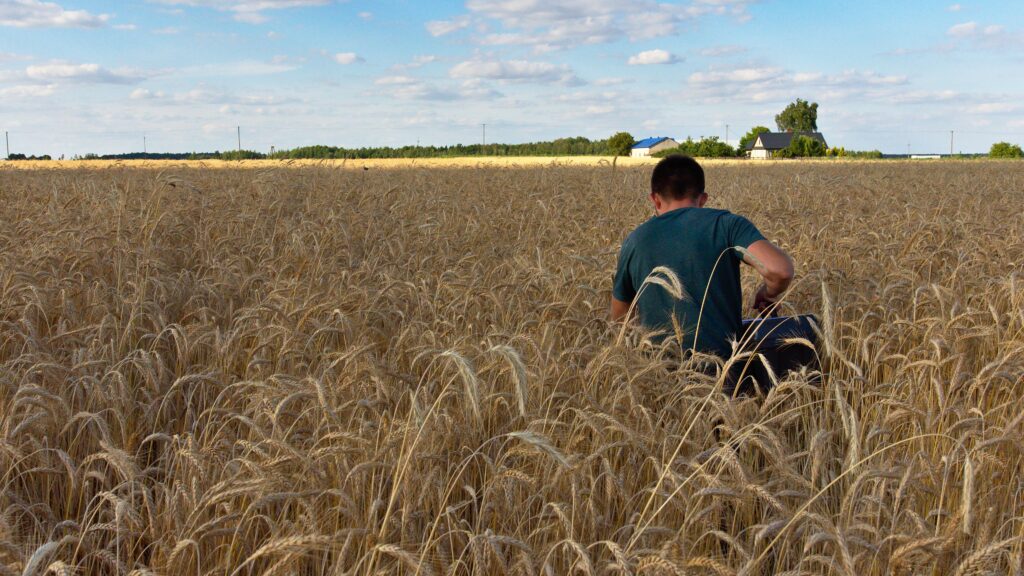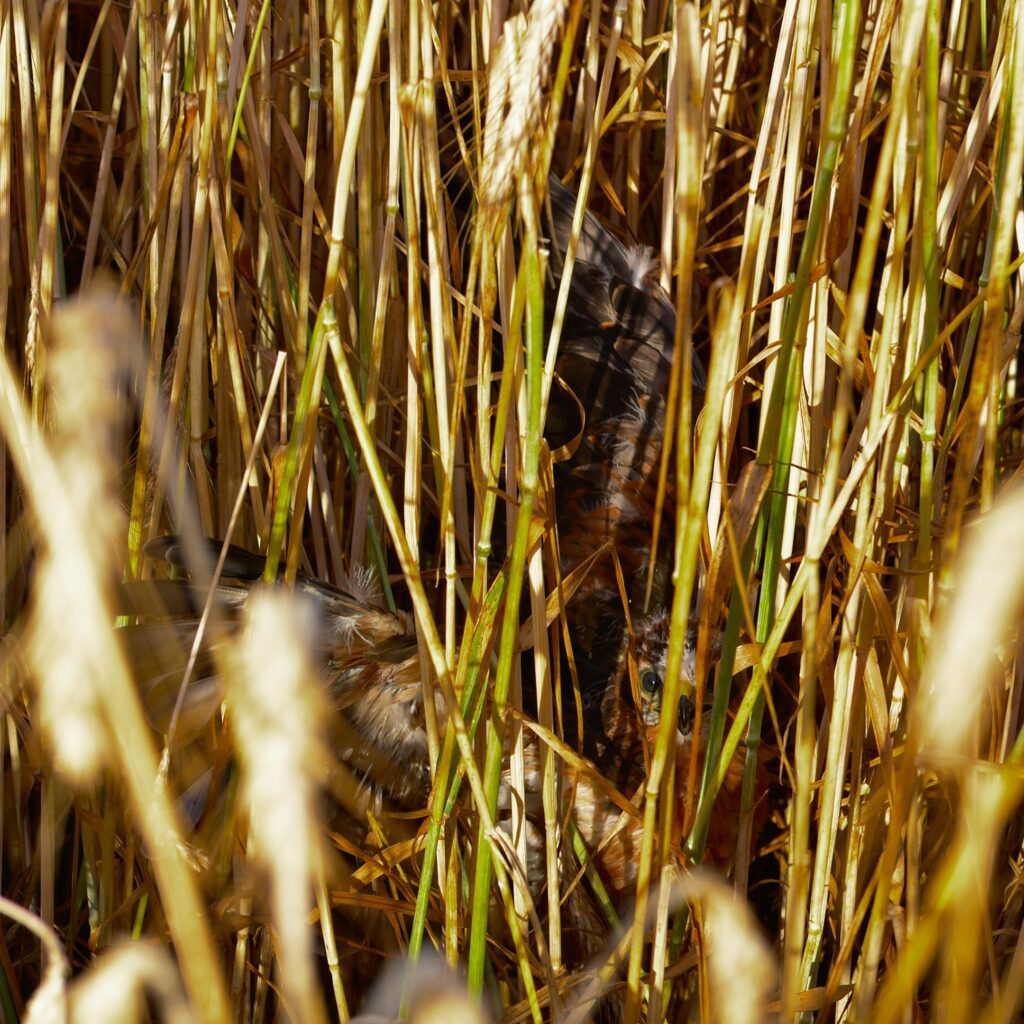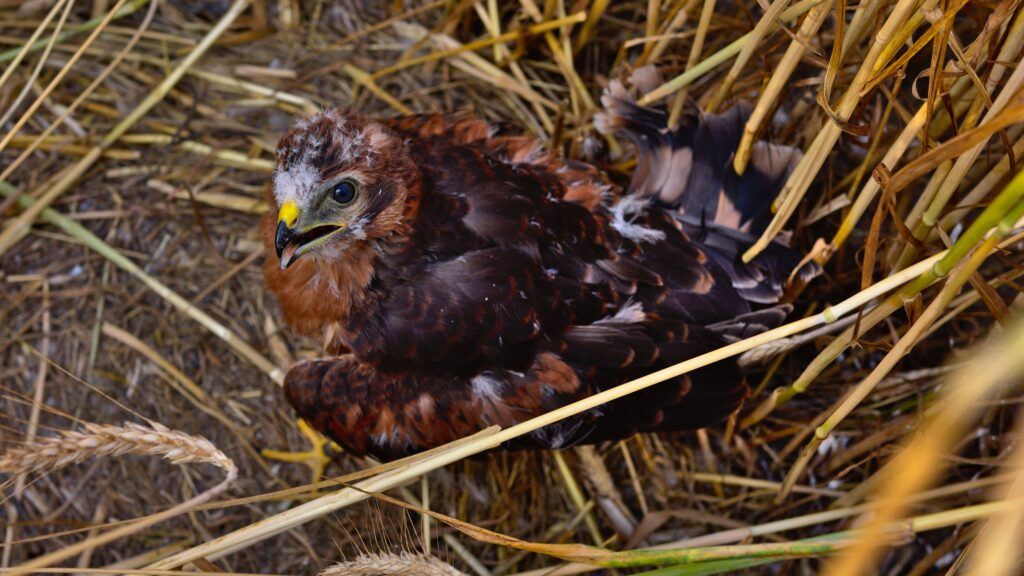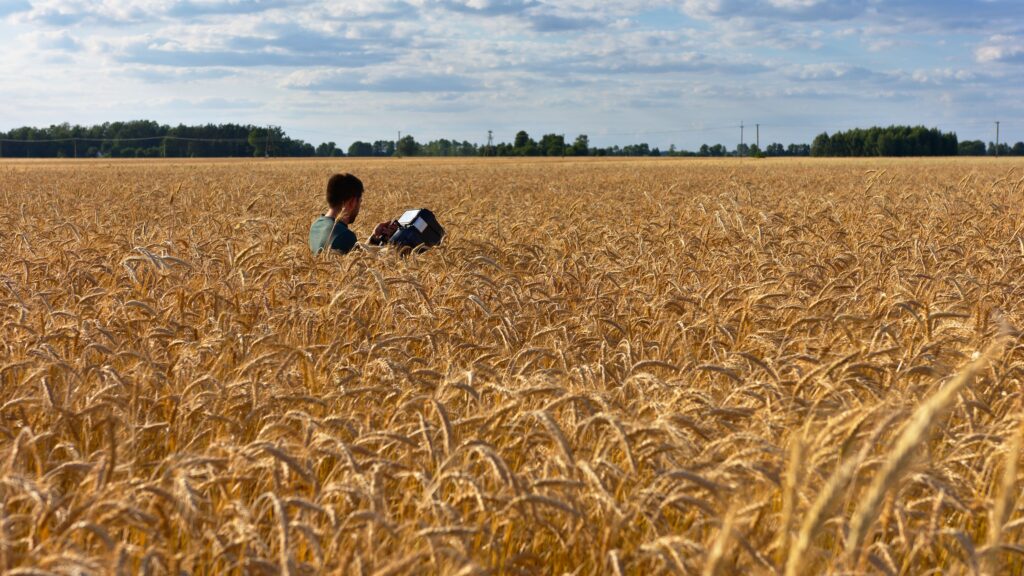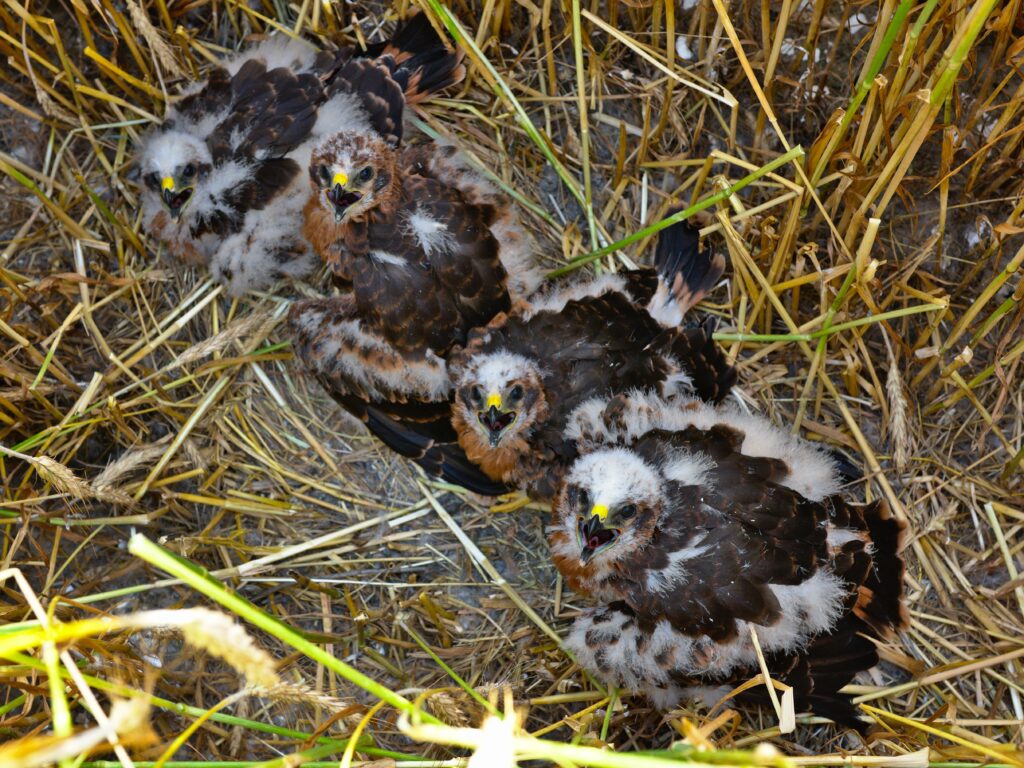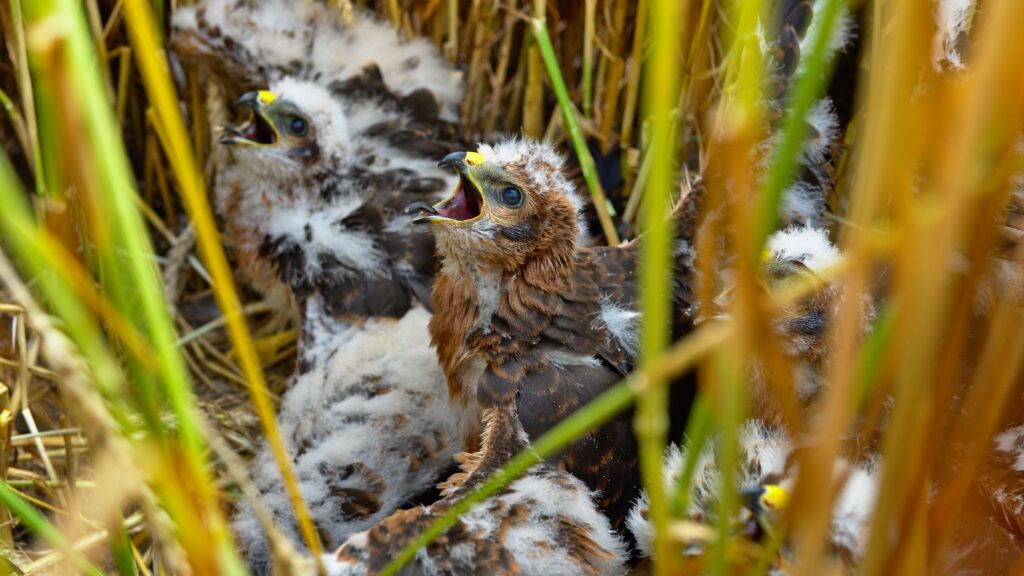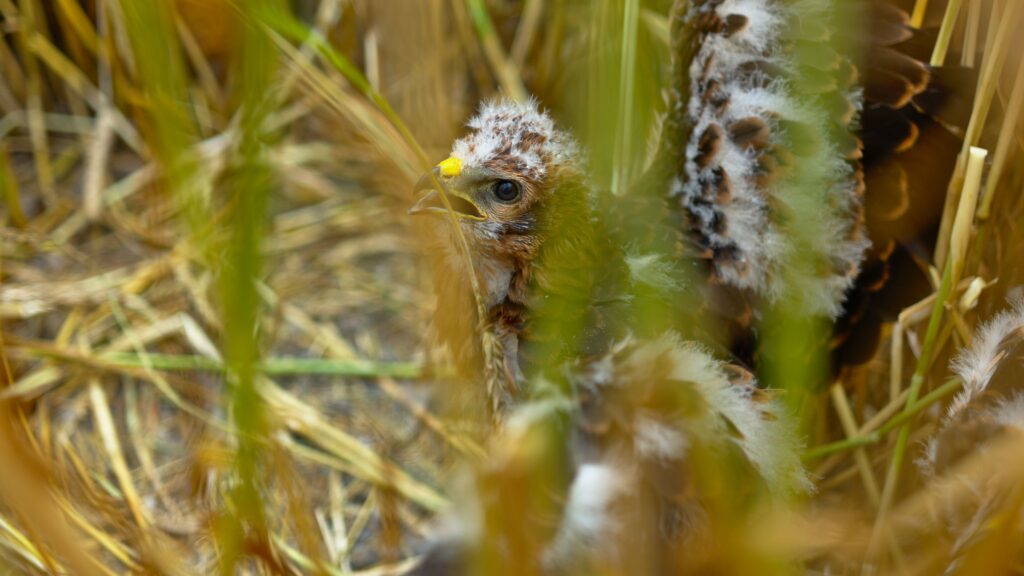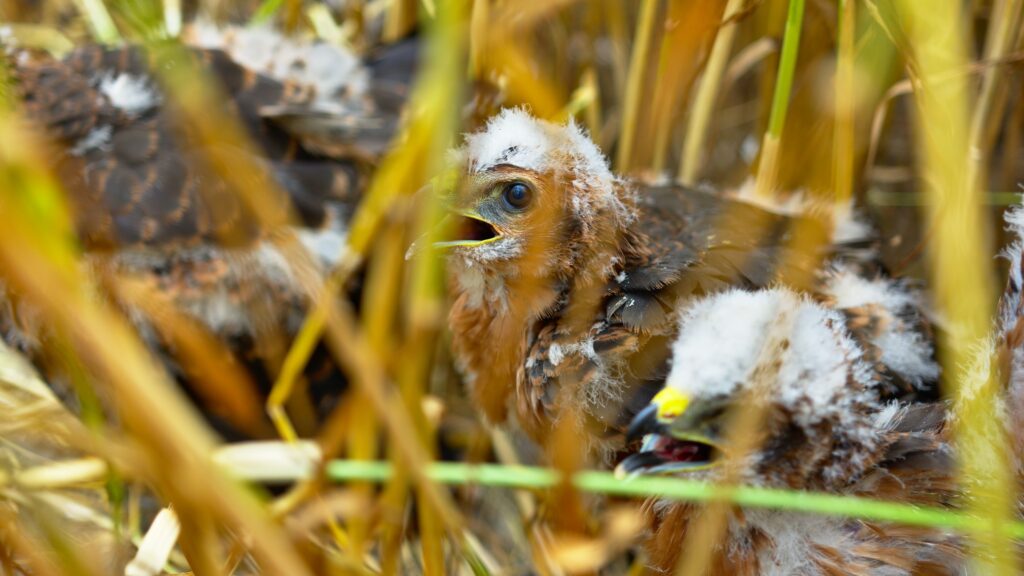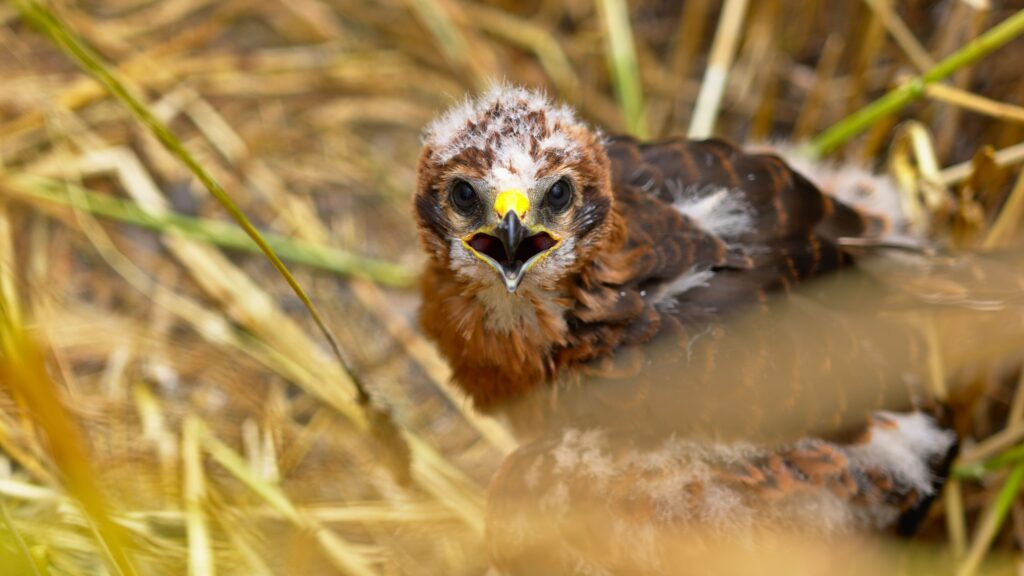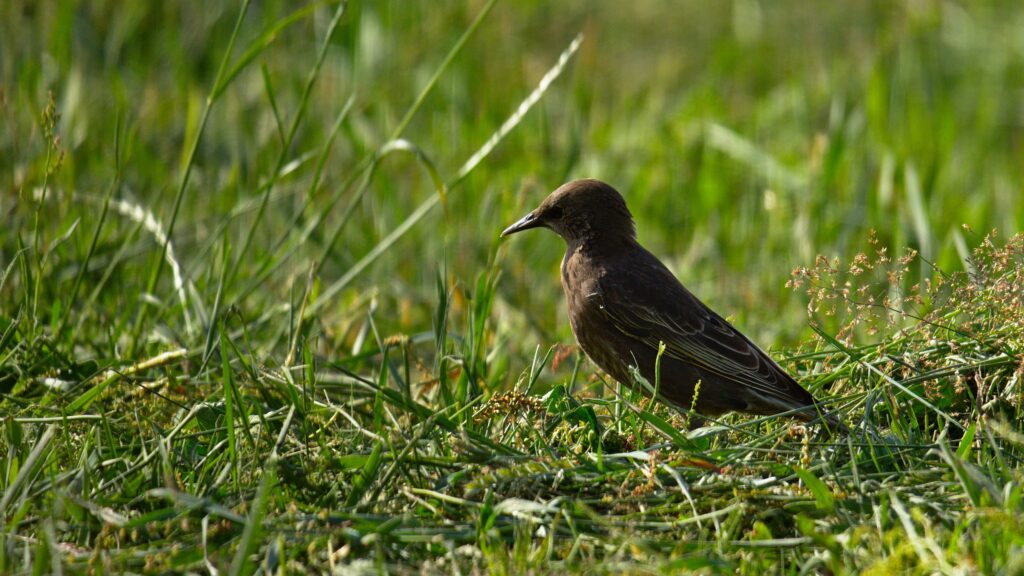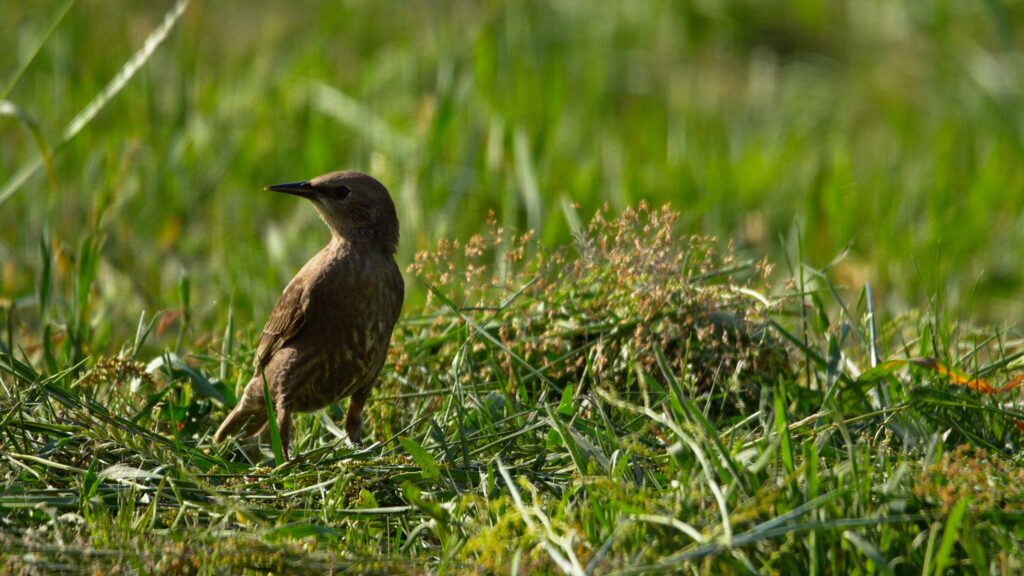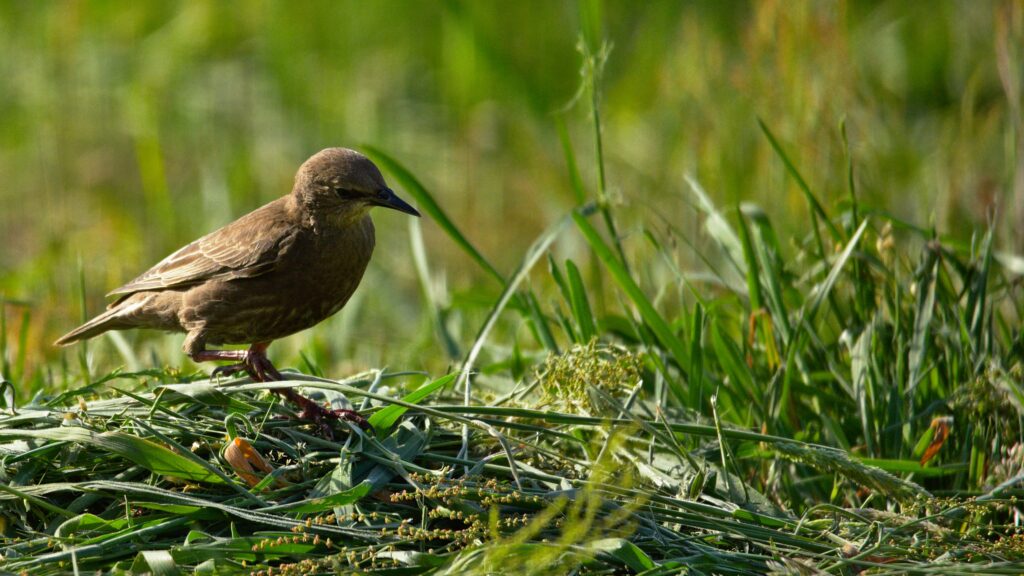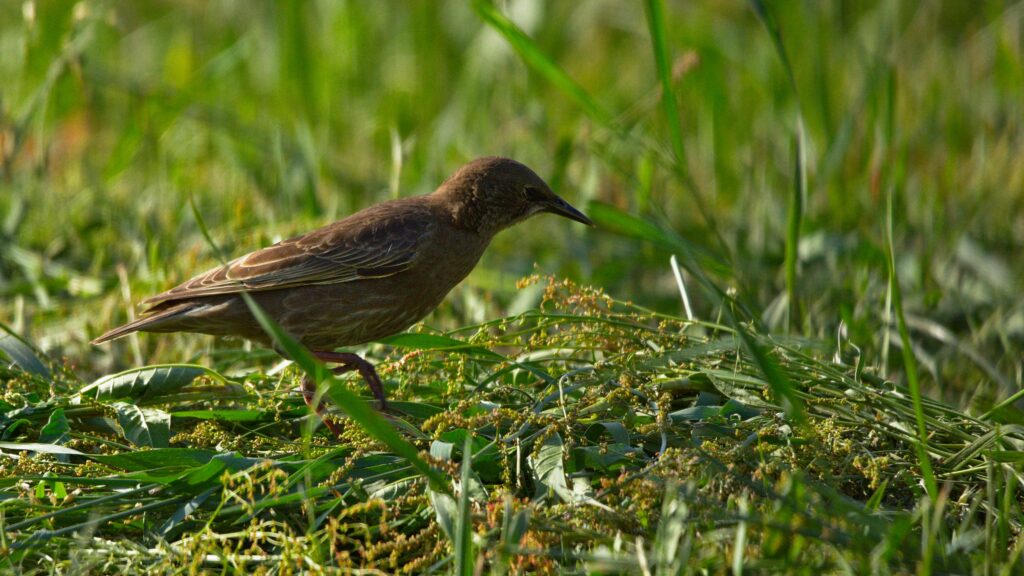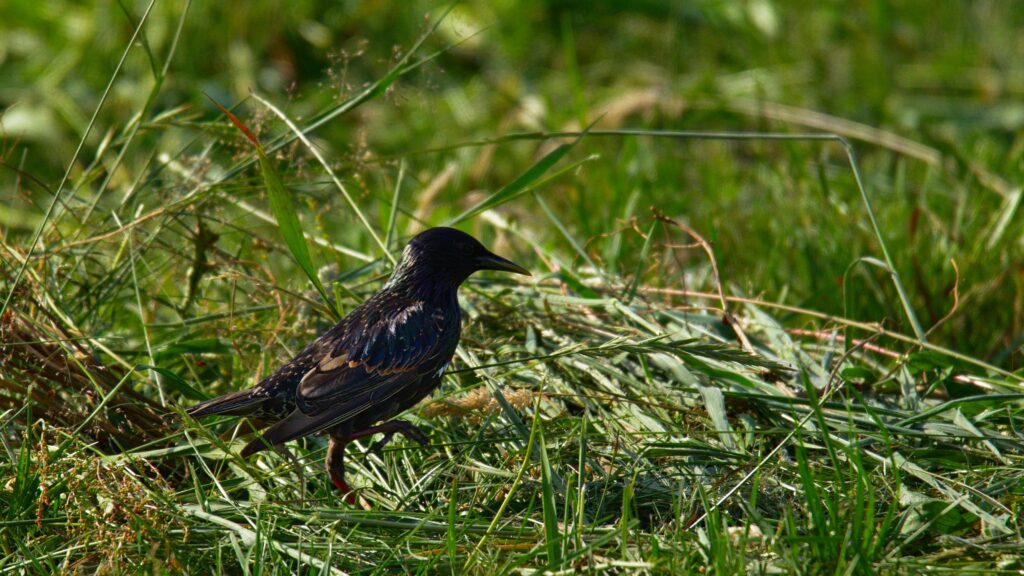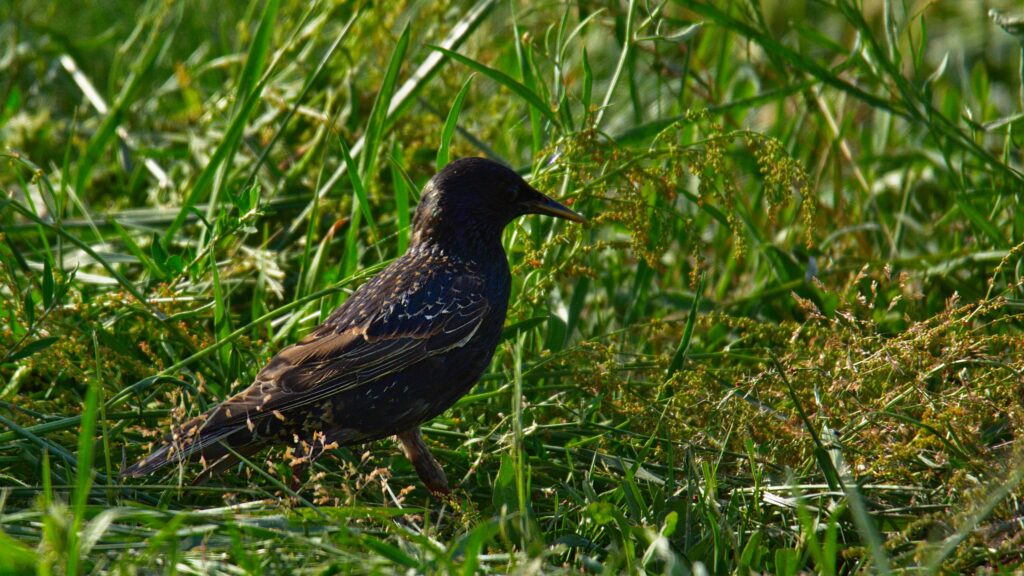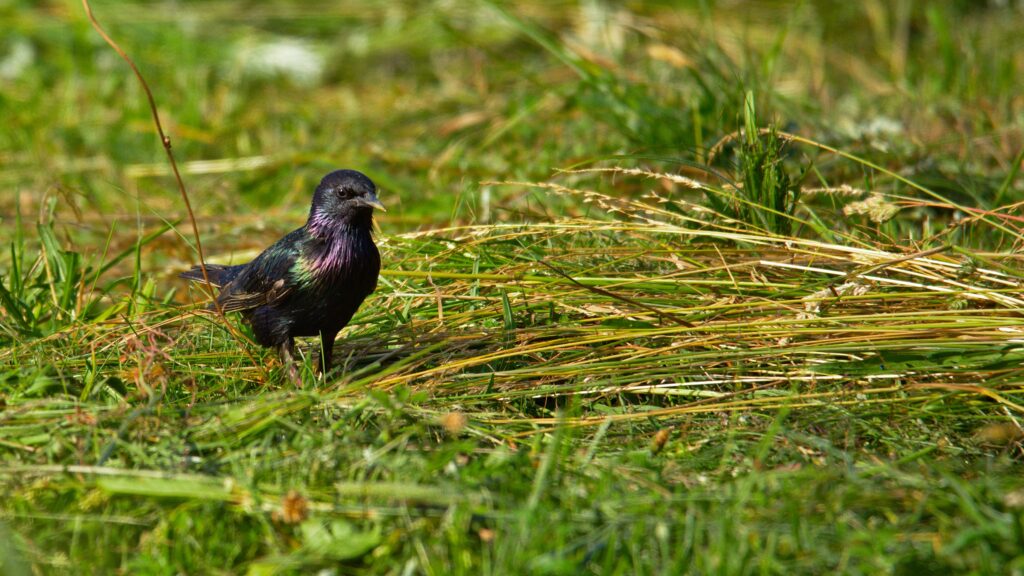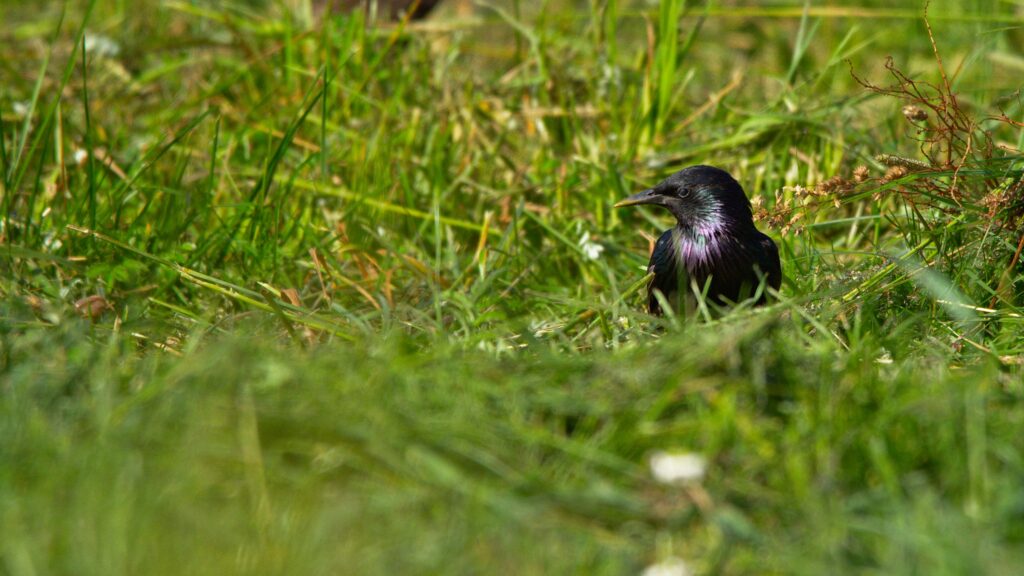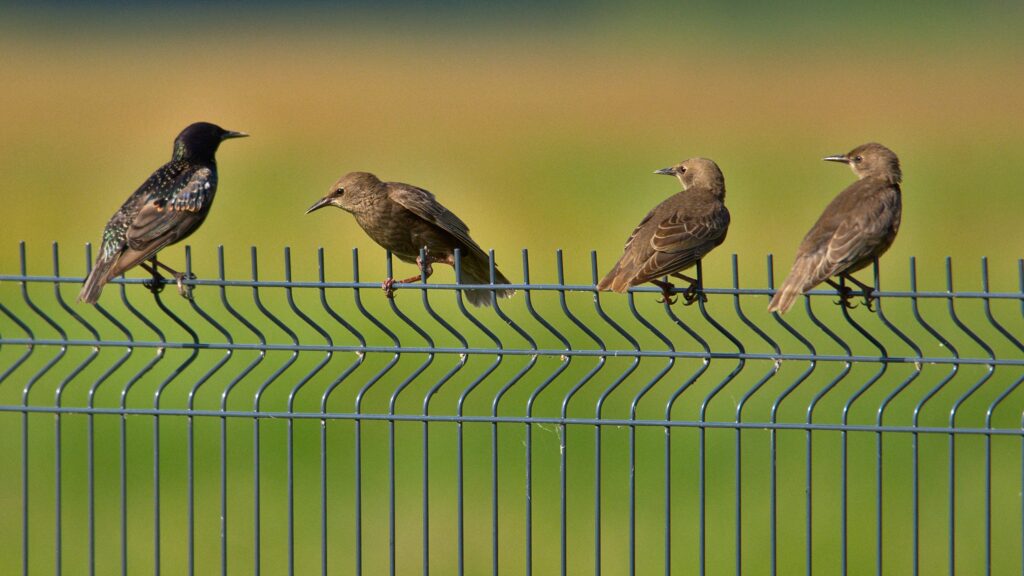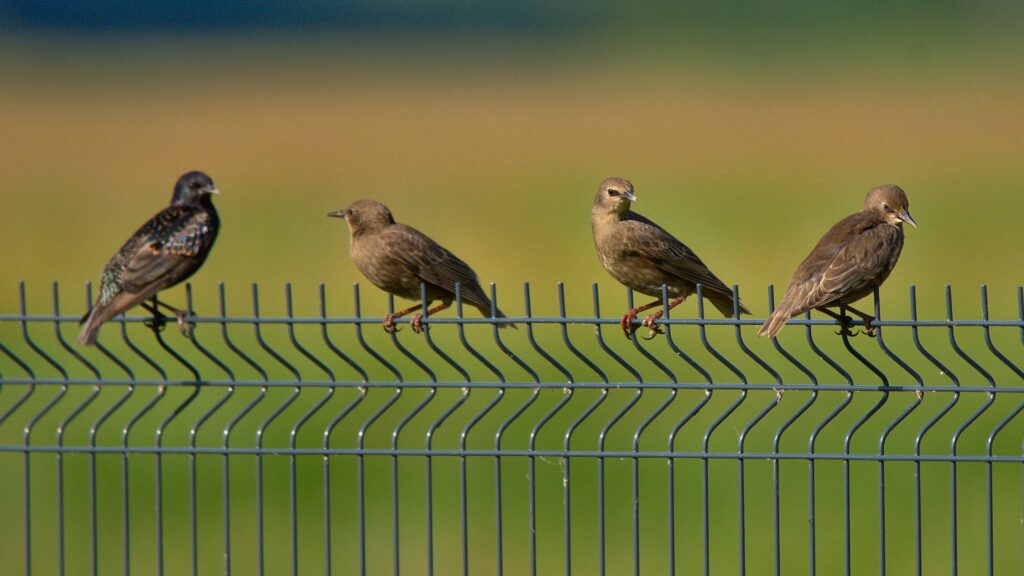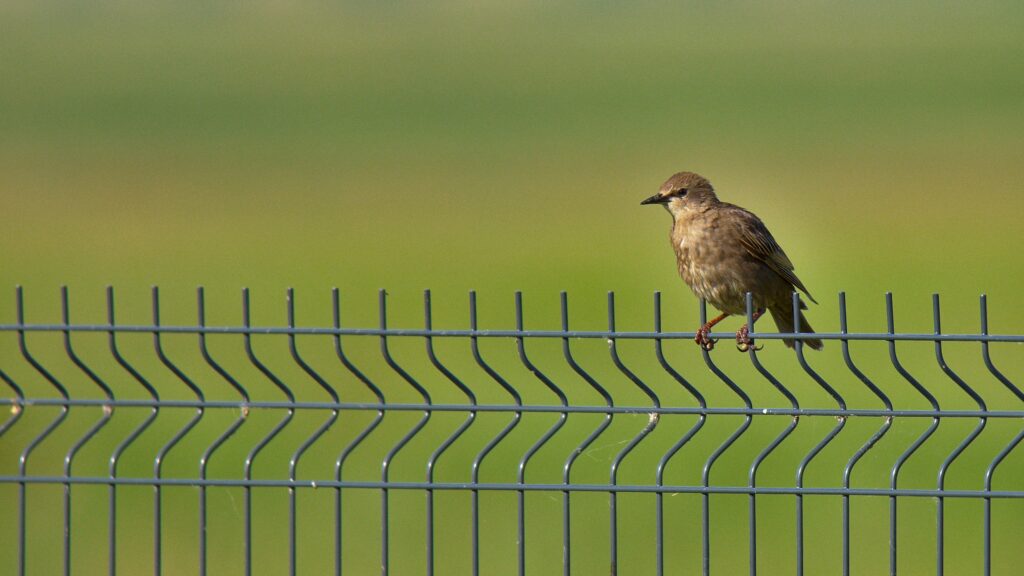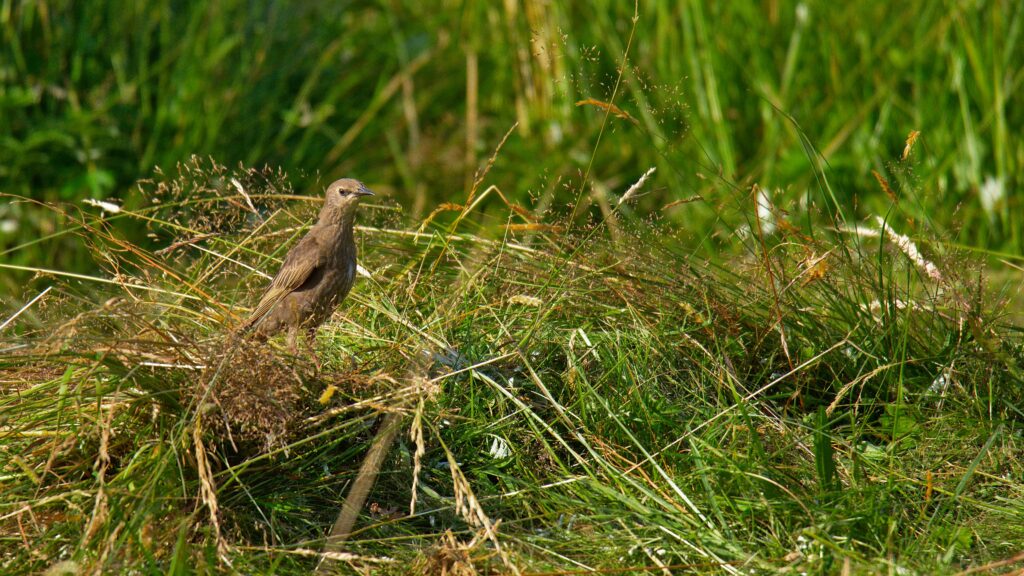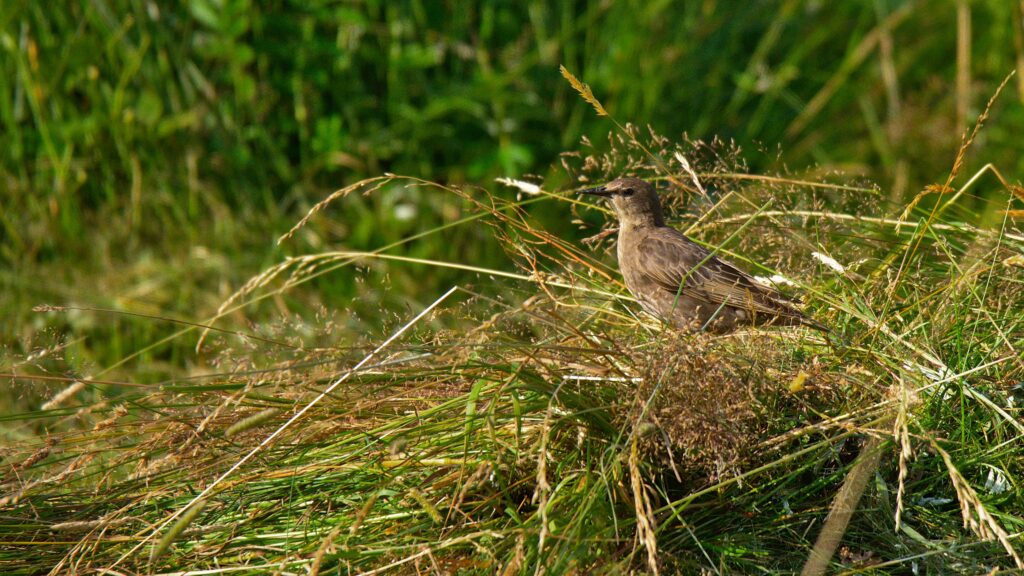In a Harrier’s Nest.
W ostatni czwartek po spotkaniu z błotniakiem L50 miałem okazję uczestniczyć w obrączkowaniu młodych błotniaków łąkowych, które nie zdążyły jeszcze opuścić swoich gniazd. Razem z Przemkiem z Towarzystwa Przyrodniczego „Bocian” działającym w projekcie ochrony błotniaka łąkowego, udaliśmy się w okolicę wsi Kierzków, gdzie Przemek znalazł dwa gniazda błotniaków. On miał obrączkować maluchy, a ja służyć pomocą.
Last Thursday after meeting the L50 harrier I had a chance to take part in ringing young Montagu’s harriers that didn’t left their nests yet. Along with Przemek from the Nature Society „Stork” that coordinates a project of the Montagu’s harrier preservation we went to the vicinity of the Kierzków village where he found two nests of the harriers. He was going to ring the nestlings and asked me for help.
Gdy dotarliśmy na miejsce musieliśmy najpierw przedrzeć się przez wysokie zboże, a samo gniazdo było tak dobrze zamaskowane, że nawet stojąc dwa metry obok miałem problem z jego dostrzeżeniem. W pewnym momencie zauważyłem ptaka, który wygładał jakby był zaplątany w zbożu. Później zauważyłem kolejnego na ziemi. Dopiero chwilę później dostrzegłem dwa kolejne – mimo, że były tuż obok mnie! Przemek szybko złapał pierwszego osobnika i założył mu obrączki. W związku z tym, że ptaki za bardzo nie uciekały moja rola mogła się ograniczyć do obserwowania i dokumentowania całego procesu. Mój kompan po kolei stanowczo, ale i delikatnie łapał ptaki i wkładał do połowy do worka aby nie widziały co się dzieje i dzięki temu zachowywały trochę spokojniej. Jeden z ptaków dzielnie bronił się przed złapaniem przywierając plecami do ziemi i wystawiając szpony przed siebie, ale doświadczony obrączkarz i z tym sobie poradził. Na koniec trzeba było się oddalić od gniazda tak aby zostawić je bezpiecznym. Przemek pokazał mi jak postawić i splątać ze soba zboże, które naruszyliśmy przebywając przy gnieździe – chodziło o to, żeby żadne drapieżniki nie wypatrzyły przez nas gniazda i młodych – ani z ziemi (na przykład lisy) ani z powietrza (błotniaki stawowe podobno uwielbiają zjadać młode swoich łąkowych pobratymców).
When we came on site we needed to get through the high crops and the nest itself was so well masked that even when I was standing two meters away from it I had a problem to see it. Then I spotted a bird that looked like it was stranded in the crops. A second after that I found another one on the ground. It took me a moment to spot another two – despite the fact they were really close to me. Przemek quickly grabbed the first bird and put rings on it’s legs. As the birds were not running away my actions were limited to observing and documenting the whole process. My companion was picking the birds up in a confident but gentle manner and the he was putting them in a small sack so that they couldn’t see what is happening and were behaving less nervous. One of the birds was furiously defending itself against being picked up by laying down on his back with his claws up in the air but an experienced ringer was capable of dealing with it. Then we needed to get away from the nest in such a way that it stayed safe. Przemek showed me how to straighten and tangle the crops that we disturbed near the nest – we had to do it to protect the nest from being spotted both from the ground (for example by foxes) and the air (as the western marsh harriers really like to feast on the young of their Montagu’s cousins).
Nadszedł czas na drugie gniazdo. Tu ptaki były jeszcze mniejsze a więc i spokojniejsze. Szybko udało się je zaobrączkować i mogliśmy oddalić się od gniazda.
Now it was time for the second nest. The nestlings in here were smaller and a because of that a little more calm. It took a moment to ring them and we could get away from the nest.
W tym miejscu chciałbym zaznaczyć, że były to moje pierwsze wizyty w gniazdach jakichkolwiek ptaków. Jeden z powodów jest taki, że wyznaję zasadę bycia maksymalnie niezauważalnym dla zwierząt, które fotografuję. To ja wchodzę na ich teren, do ich domu i chciałbym ich nie niepokoić – zwłaszcza w gnieździe gdzie są młode. Nieumiejętne zachowanie się w takim miejscu mogłoby skutkować zniszczeniem gniazda lub zdradzeniem jego lokalizacji drapieżnikom i w konsekwencji śmiercią młodych. W tym przypadku towarzyszyłem profesjonaliście, który doskonale wiedział co i w jaki sposób robić, a przy okazji zwracał uwagę i na to co ja robię. Dodatkowo ptaki i tak były wyjmowane z gniazda w celu zaobrączkowania, a więc moja obecność nie wpływała znacząco na stres, którego doświadczały. Zapewne nieprędko trafi mi się ponownie taka okazja.
Pamiętajcie aby nie zbliżać się za bardzo do gniazd, a już na pewno nie odsłaniać ich tylko i wyłącznie w celu zrobienia zdjęcia!
I would like to point out that these were my first visits ever in the nests of any birds. One of the reasons is that I believe in being as less invasive to the animals I photograph as possible. It’s me who is entering their realm, their home and I would not like to make them upset – especially in the nest with the young. Incompetent behaviour in such a place could lead to destruction of the nest or disclosure of the location to predators and the death of the nestlings as a consequence. This time I accompanied a professional that knew very well what should be done and was having an eye on what I was doing. Another thing is that the birds were already upset by the fact that they were taken out of the nest to be ringed and my presence was not doing a big difference to what they experienced. I doubt that I’ll be able to take part in anything like that again anytime soon.
Please remember not to aproach any nests , and do not lay them open just to make a photo!
